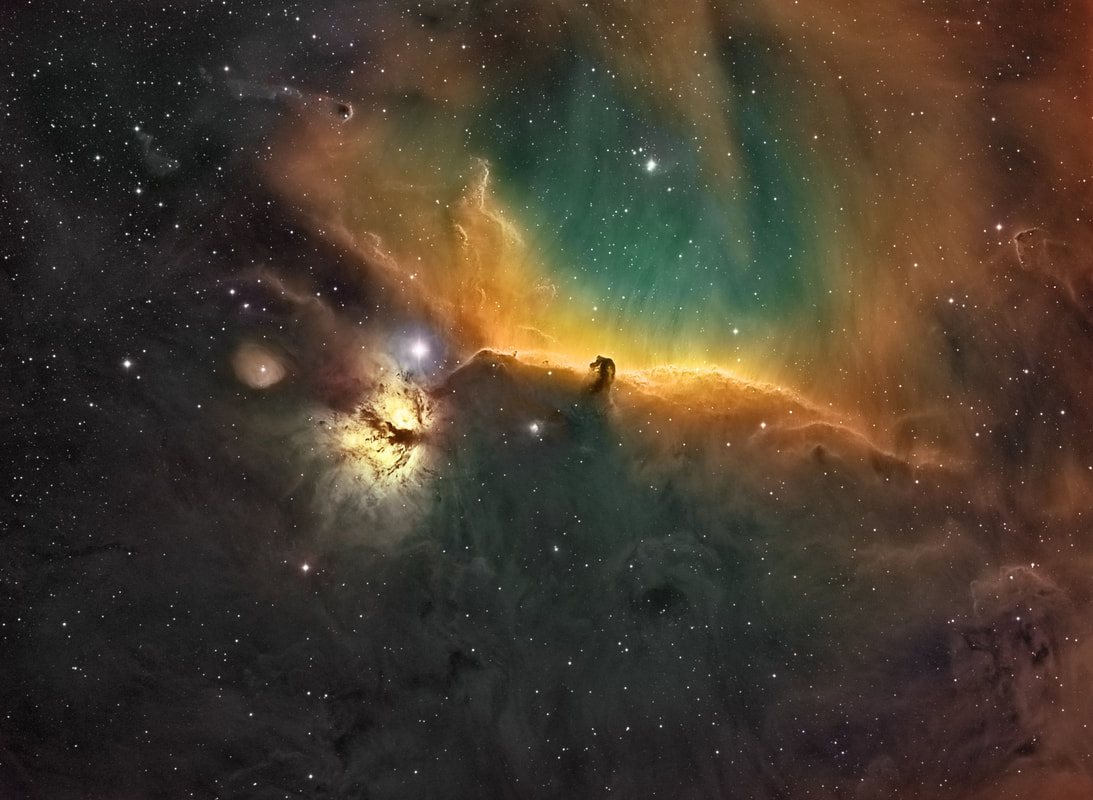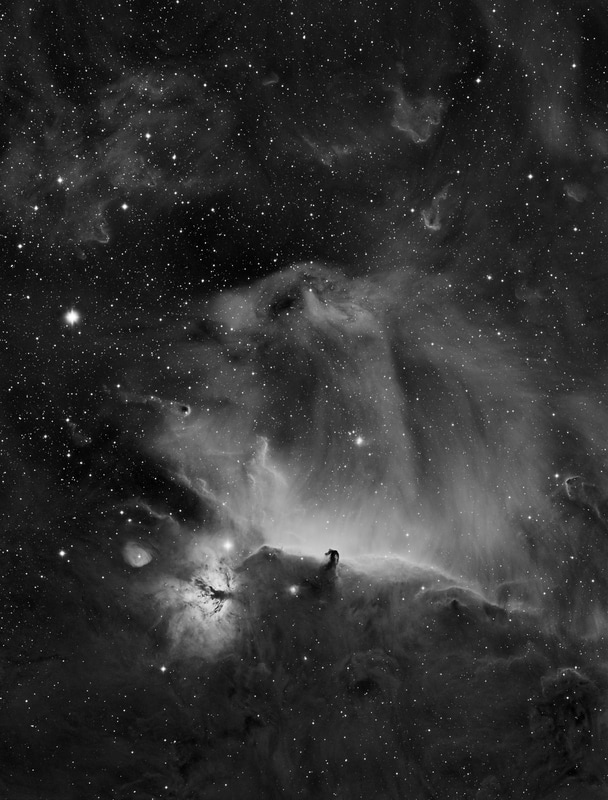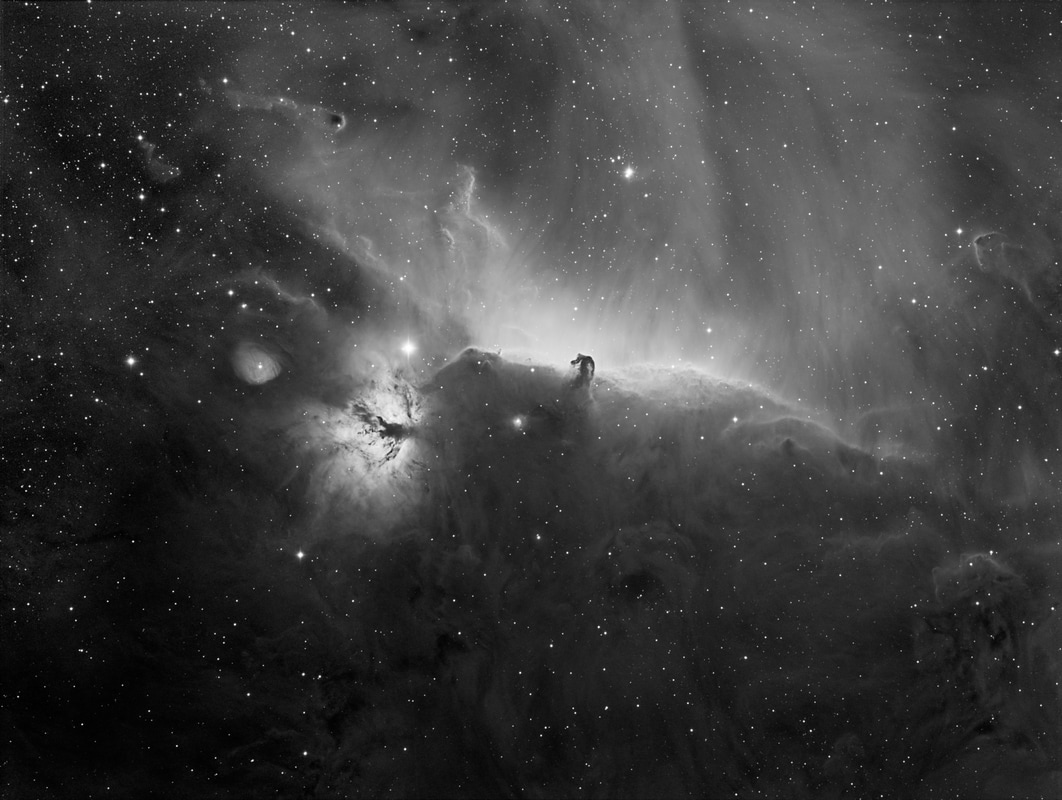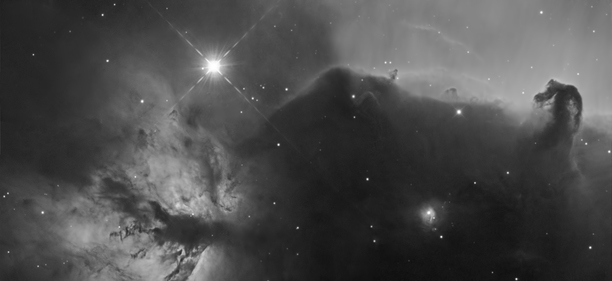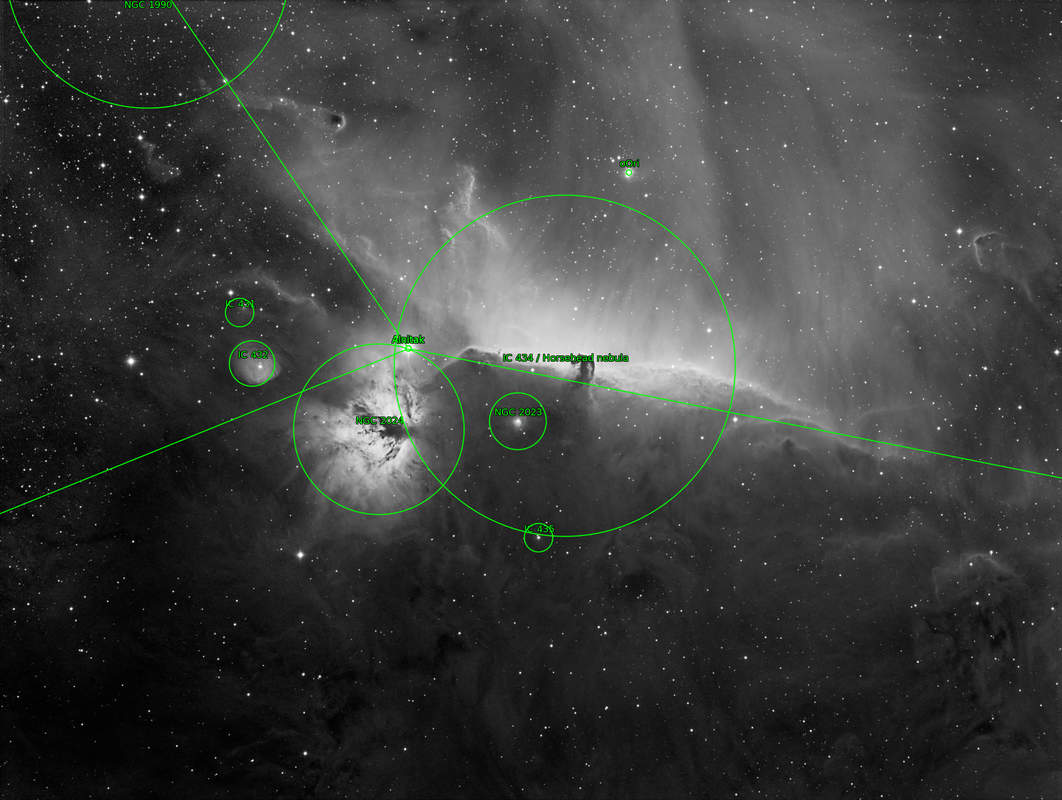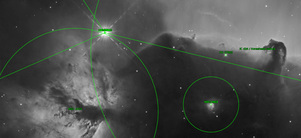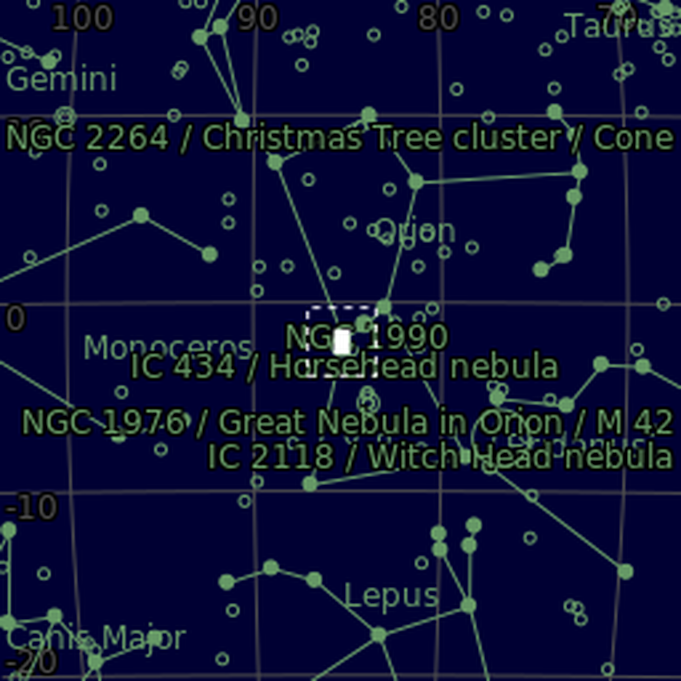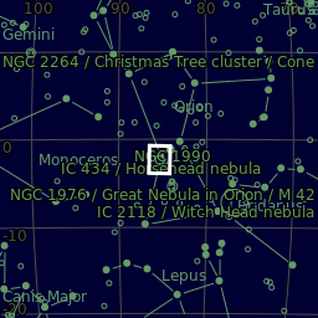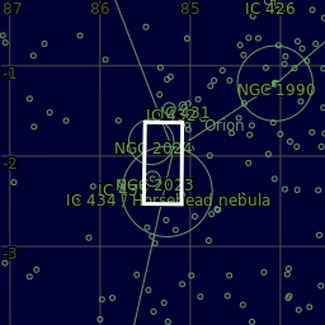IC434 - The Horsehead and Flame nebula
The Horsehead Nebula (also known as Barnard 33 and IC434 ) is a dark nebula in the constellation Orion. The nebula is located just to the south of the star Alnitak, which is farthest east on Orion's Belt, and is part of the much larger Orion Molecular Cloud Complex. It is located approximately 1500 light years from earth. The Flame Nebula, designated as NGC 2024 and Sh2-277, is an emission nebula on the left hand side of the Horsehead.
|
This is the Horsehead nebula and Flame that has been taken in narrowband and then blended in the tradition Hubble Space Telescope palette. I have decided to leave the green in the image as it added great depth that was otherwise missing. This is not normally presented in narrowband colours so it is quite unusual in this regard.
This was taken with the Takahashi FSQ85 dual rig, but the Ha was from the 2 pane mosaic from the previous year. Details: Mount: Skywatcher EQ8 / Mesu 200 Camera: QSI683 and Moravian G2-8300 with 3nm Astrodon filters Scope: Takahashi FSQ85 x0.73 27x1800s Ha 11x1800s OIII 20x1800s SII Total of 29 hours of integration time. |
|
This is a two pane mosaic of the Horsehead area in Orion. I originally did the lower pane (the image below) but felt that a pane above this would give a sense of completeness in the image.
This is the first image that has taken advantage of the dual rig that I have got together. Details: M: Mesu 200 T: Takahashi FSQ85 0.73x Pane 1: C: QSI683 3nm Ha filter 27x1800s Pane 2: C: QSI683 3nm Ha filter C: Moravian G2-8300 3nm Ha Filter 20x1800s QSI 8x1800s G2-3800 28x1800s Total exposure time 27.5 hours |
Widefield
|
This is a single pane widefield image and you can see the difference between this image and the close up image below.
This gives you a great feeling for how different telescopes at different focal lengths impacts on the apparent magnification of an object. Details M: Mesu 200 T: Takahashi FSQ85 0.73x C: QSI683 3nm Ha filter 27x1800s totalling 13.5 hours of exposure |

